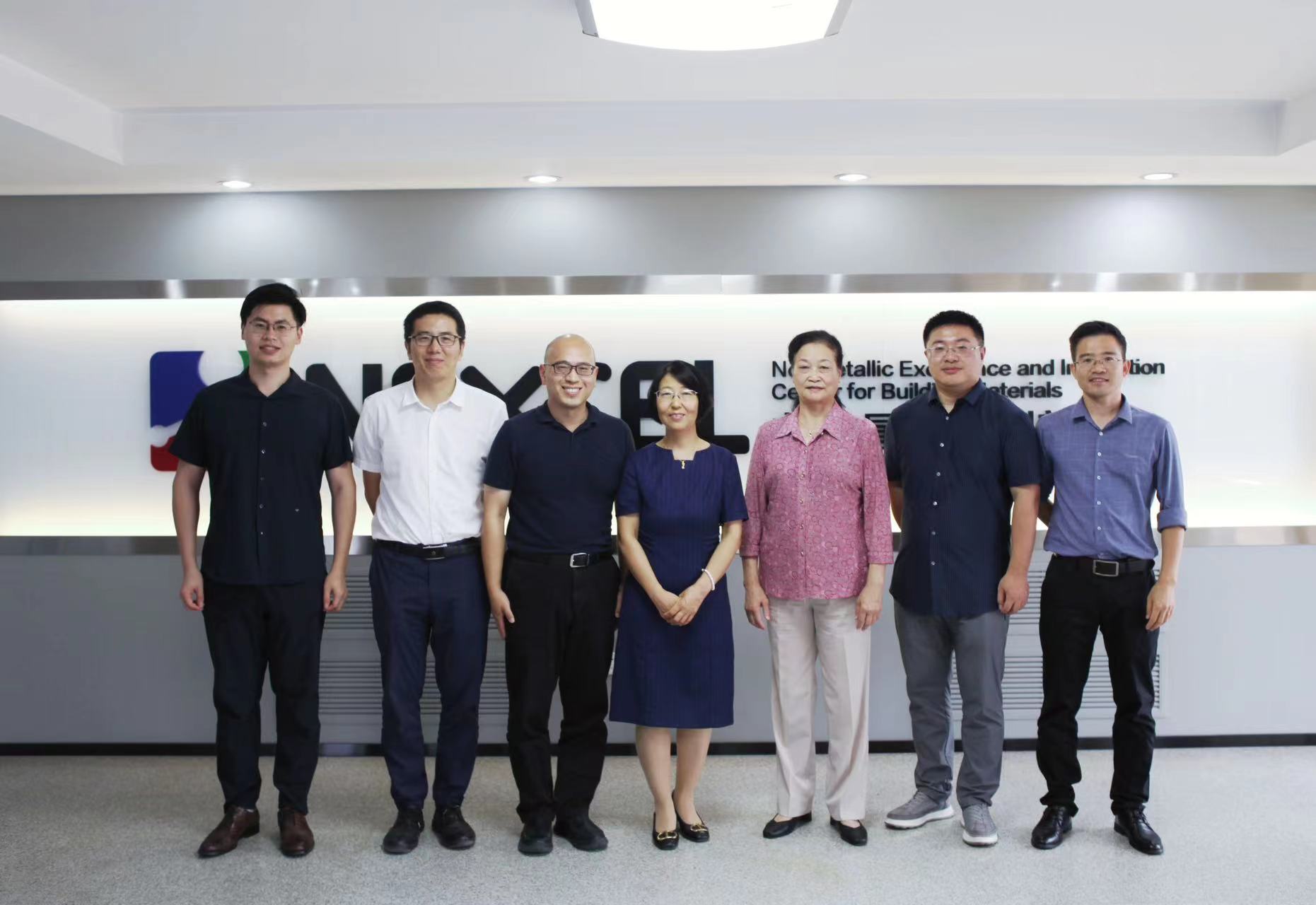
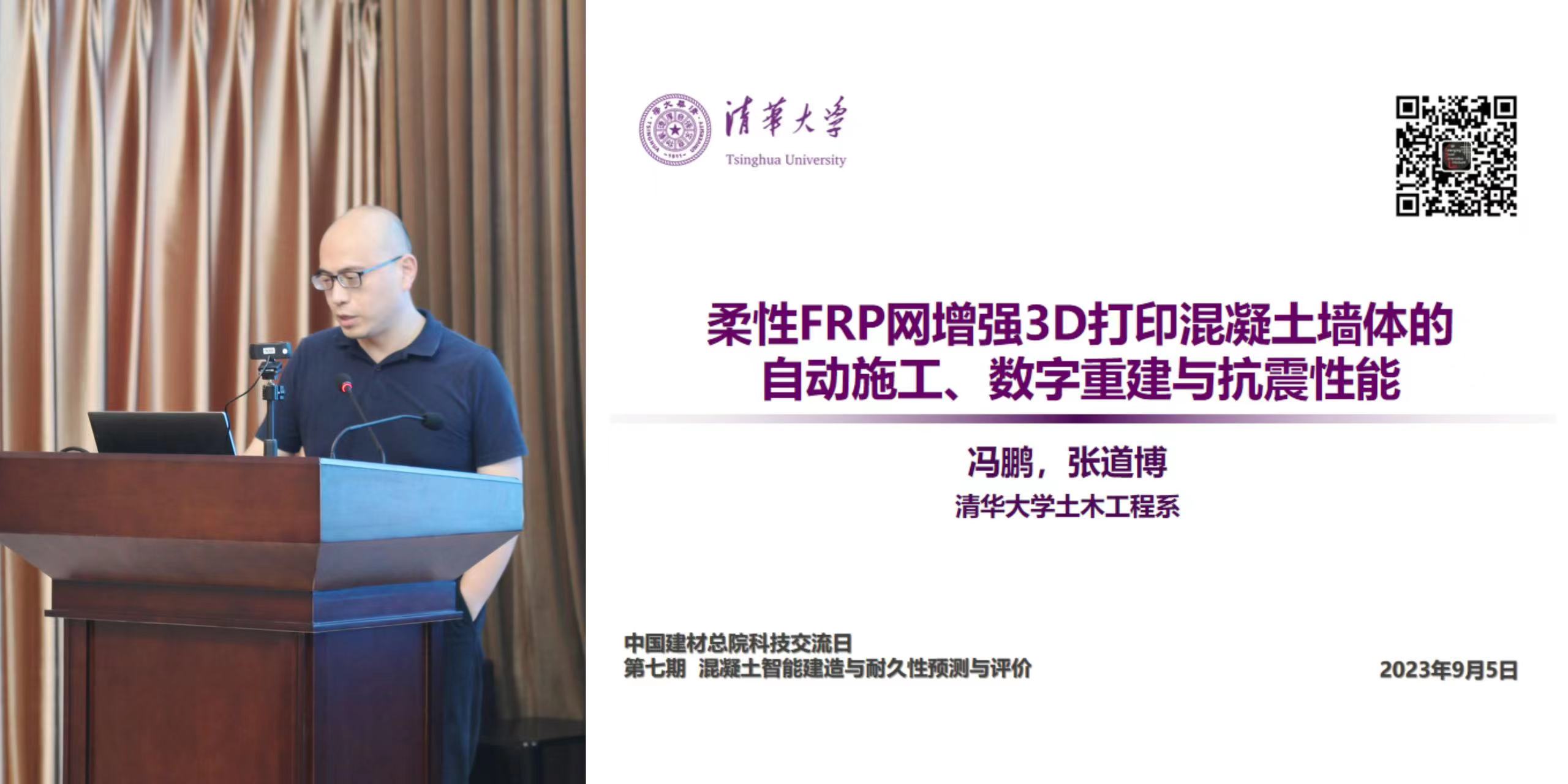
Prof. Feng Peng from Tsinghua University delivered a report on “3D printed concrete walls reinforced with flexible FRP textile: automatic construction, digital rebuilding, and seismic performance”. He combined 3D scanning, modeling, and forming with the civil engineering, and introduced the automatic construction method in detail. He highlighted an innovative continuous reinforcement method with fiber reinforced polymer (FRP) flexible textile and Engineered Cementitious Composite (ECC). 3D laser scanning technology was implemented in large-scale 3D concrete printed walls, and accurate models were digitally rebuilt, which was successful applied in the farmhouse demonstration in Hebei.
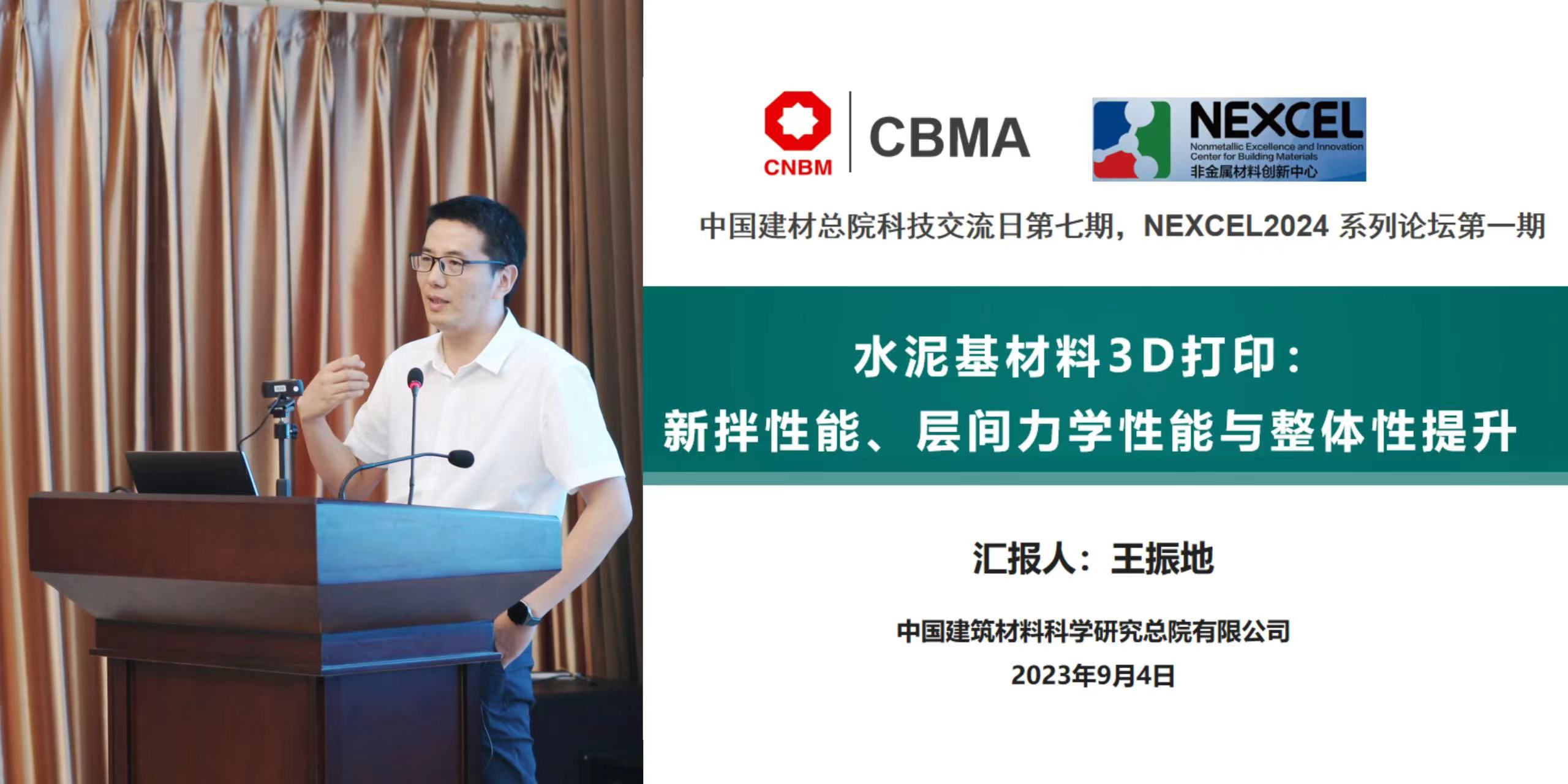
Prof. Wang Zhendi from CBMA shared a report on “3D printing with cement-based materials: fresh property, interlayer mechanical properties and integrity enhancement.” Prof. Wang first proposed three key scientific issues encountered in 3D printed concrete construction. Validation tests were conducted through penetration resistance testing, fiber orientation distribution evaluation, and experiments with different reinforced measures. These measures led to the improvement of the overall performance of 3D printing with cement-based materials.
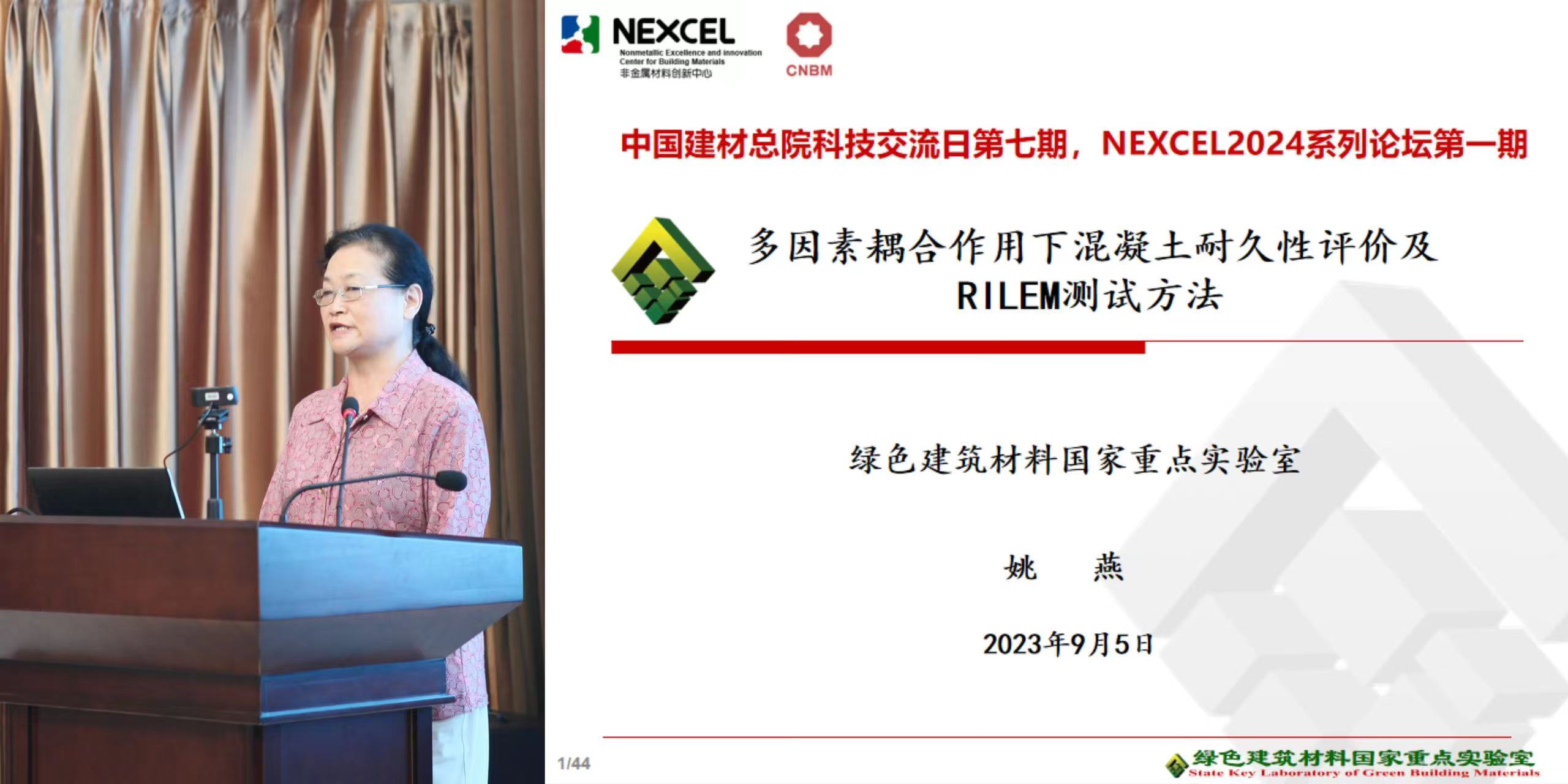
Prof. Yao Yan from CBMA gave a speech on “Evaluation and RILEM test methods to determine durability of concrete under combined actions”. according to the common issues that chloride ion erosion and carbonation are the main factors causing steel corrosion and concrete structural damage, she introduced two RILEM test methods standards which are “Test Methods to Determine Durability of Concrete under Combined Environmental Actions and Mechanical Load” and “Test Method to Determine the Influence of Applied Stress on Chloride Diffusion”. These two standards are chaired by Prof. Yao and have been accepted and applied worldwide. In addition, Prof. Yao introduced the engineering application in Hong Kong-Zhuhai-Macao Bridge and Guangdong specific water supply.
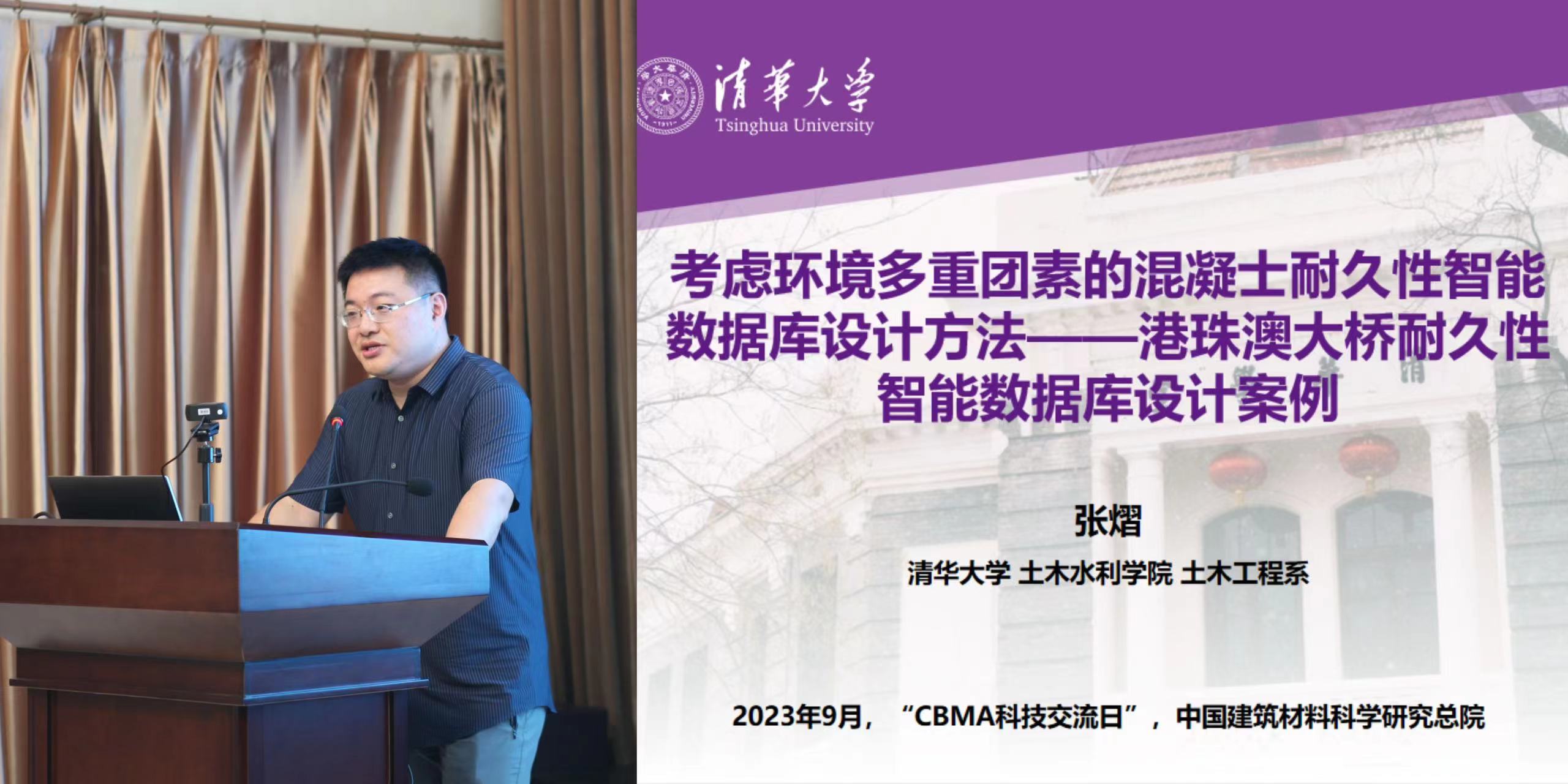
Prof. Zhang Yi shared his study on “Smart database design for concrete durability analysis considering environment factors”. Prof. Zhang used the durability smart database design of the Hong Kong-Zhuhai-Macao Bridge as a case study and provide a detailed introduction to Data-Centric Durability Analysis Method to make sense of actual data. This method aims to establish an smart analysis that covers the entire process from data input to assessment and maintenance result output.
At the end of the forum,experts has extensive discussion on the key issues of 3D printed concrete and concrete durability. This forum not only provide suggestions for research on 3D printing technology but also served as a reliable prediction towards attaining the centennial lifespan of buildings.


